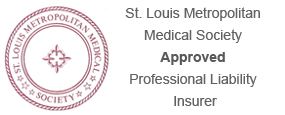Most physicians and other medical professionals have developed “their” way of doing things over the course of their careers, and changing those practices can be difficult. However, when it comes to operating a successful, and claims-free, medical practice, uniformity is required. Effective policies and procedures are needed to ensure everyone understands what is expected of them and what will happen next. Adherence to these policies and procedures should result in a more efficient office, and reduce the potential for claims related to individual error or omissions.
Imagine a practice consisting of three very accomplished physicians, a physicians’ assistant, four nurses, a practice manager, and two staffers. Everyone has at least twenty years of experience, always meets the standard of care, and is considered among the best at what he or she does. However, the “policies and procedures” were written when appointments were written in a book, all records were only contained on charts in a file cabinet, and lab results were delivered by hand. As technology advanced, everyone in the practice developed “their” way of handing issues such as communicating with pharmacies and reporting test results to patients. Now there are essentially three or four different “practices” in the same practice, wasting staff time, leaving patients unhappy, and harming the practice’s chances of successfully defending against a malpractice claim.
“But if everyone is meeting the standard of care, why would effective policies and procedures matter?” Assume the crux of a lawsuit against a physician and the practice is the failure to report a test result to the patient. The ancient policies and procedures are produced in discovery, and practice employees are deposed. The policies circumscribe the instances in which a patient is notified and the time and manner in which the notification is provided. The doctor’s explanation is slightly different than the policies. Finally, a nurse testifies that whether, how, and when a test result is reported to the patient depends upon the physician that orders the tests or the nurse that receives the results. This inconsistent testimony has given the plaintiff’s attorney an opening to argue that the standard of care was not met because, even within the practice, there is no agreement as to what constitutes the standard of care.
By creating and maintaining one set of rules that all professionals and staff understand and follow, a practice is increasing its efficiency and decreasing the possibility of errors or omissions. Further, consistent application of policies and procedures also establishes expectations for staff, clarity for third-parties (such as laboratories and pharmacies), and a consistent patient experience.
While effective policies and procedures leave room for professional skill and judgment and do not proscribe every action taken by employees while at work, the following topics should be addressed in a policy and procedure manual that is taught, reviewed, and easily accessible for every professional and staff member:
Reporting Test Results
It is estimated that one-third of practices do not have a policy regarding reporting test results to patients. Clearly defining when and how a test result will be reported to a patient, and then how the notification will be documented, might seem like an unnecessary burden, but the time and aggravation saved makes it worthwhile. In addition to complete documentation for the future treatment of that patient, the patient will not be forced to either call the practice, taking up staff time to hunt down the results, or silently boil over with anger that they have not been told the results.
Communication with Pharmacies
Policies and Procedures relating to pharmacy communication should address who may speak with pharmacies and how. While the process of calling in a prescription likely will not change much, addressing who may respond to a pharmacy or patient follow-up regarding medication, and documenting that response, ensures staff members are not put in a difficult position that they do not have the professional training to address.
Patient and/or Family Complaints
Deputizing everyone in the office to address patient complaints might seem like an empowering policy; but if those complaints relate to patient care, the actions of a well-meaning staffer trying to pacify an unhappy patient might be used as evidence in a malpractice case. When responding to complaints relating to treatment, the practice should have a policy of who may address the issue, and the risk management implications of any response should be considered.
Patient Privacy
Every practice likely has a separate manual regarding patient privacy, but it is important to reference that manual and ensure that everyone knows how to access those policies and procedures.
Social Media
Many practices make the mistake of assuming employees will apply the patient privacy policies and procedures to their social media activity. This is a dangerous assumption that has been proven wrong too many times to count. Many medical professionals and staffers think they are complying with HIPAA when relating a story on Facebook; but leaving what information is shared with the world to each individual is a risk no practice should take. A policy should be created stating that no employee shall post anything about any patient care or interaction on social media. No exceptions. With advances in technology and the corresponding privacy concerns, every practice should make it abundantly clear to employees and patients that even the slightest possibility of violating a patient’s privacy will not be tolerated.
Addressing important issues in written form instead of on an individual ad hoc basis will allow your practice to keep employees productive and happy, increase your bottom line, and avoid the errors or omissions that can lead to bothersome claims.


